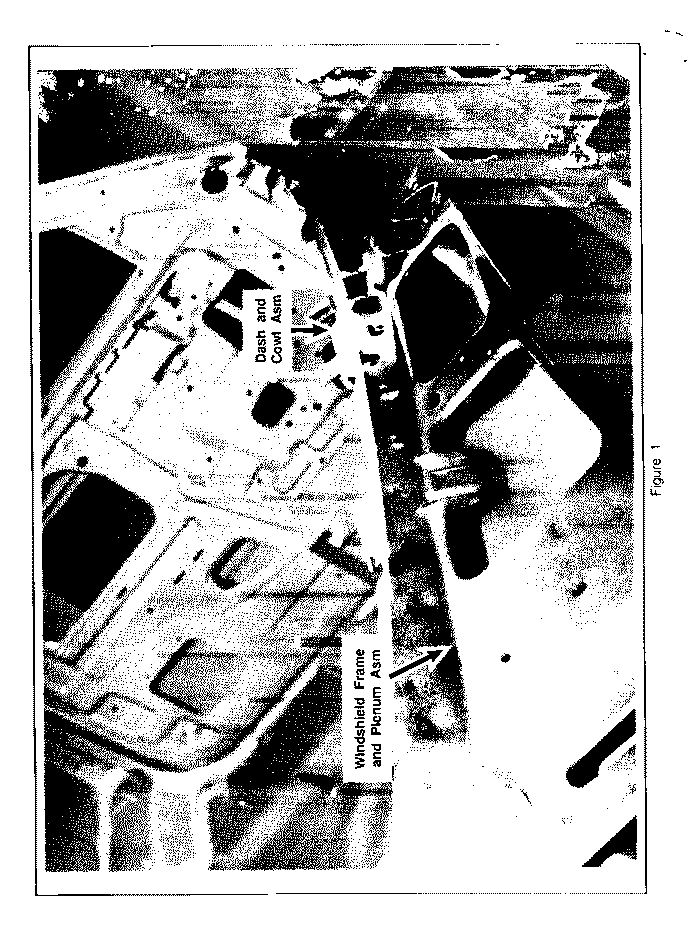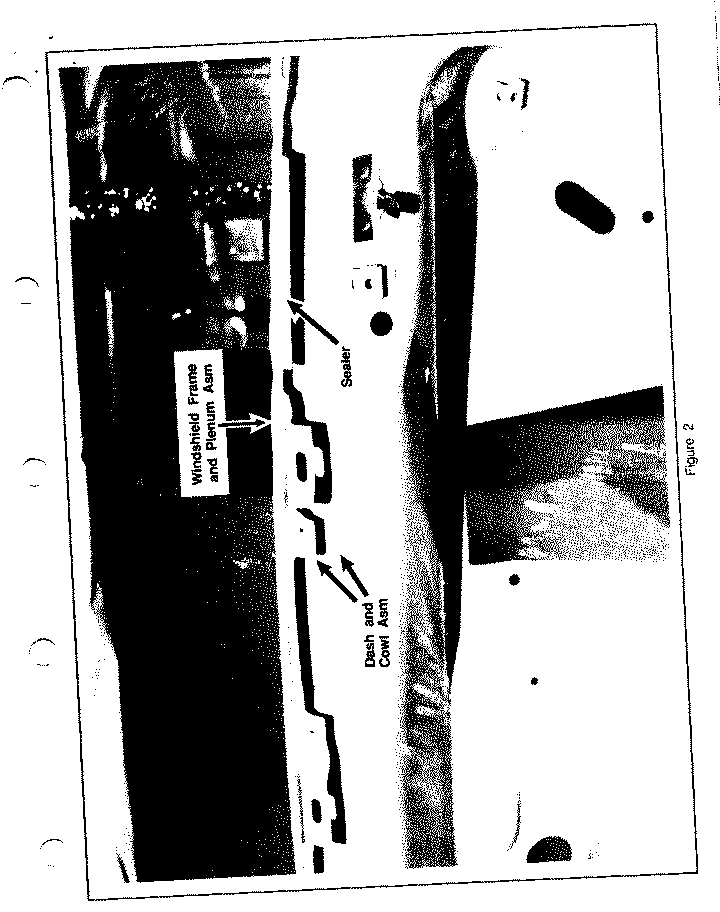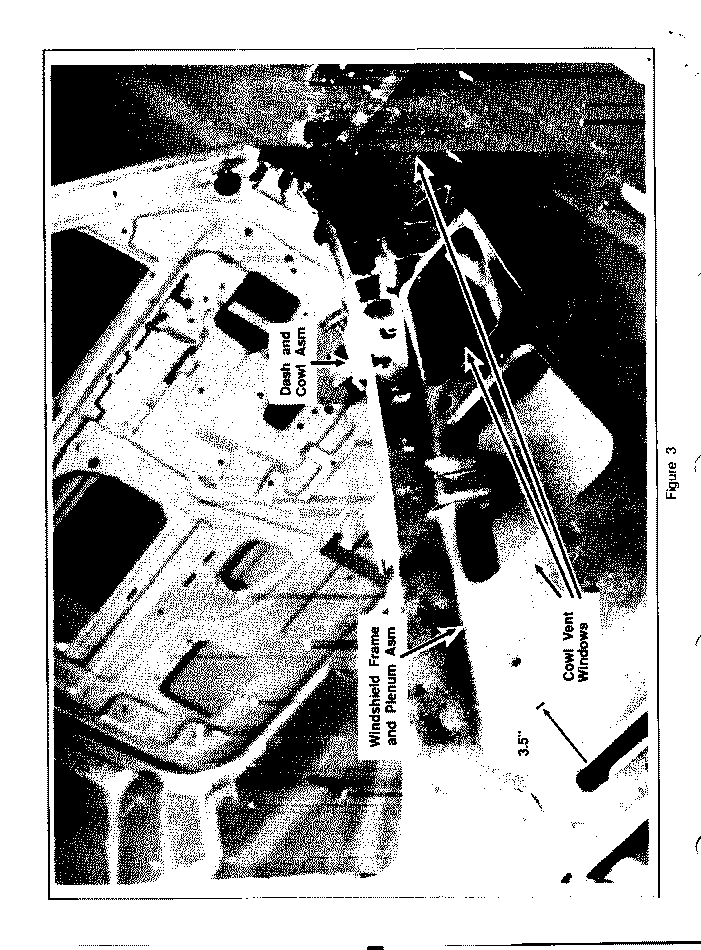WIND NOISE NEAR WINDSHIELD SERVICE PROCEDURE OUTLINED

SUBJECT: WIND NOISE AT DASH/WINDSHIELD
MODELS: 1982-91 S/T PICKUPS AND UTILITY VEHICLES
Some owners of 1982 - 1991 S/T pickup and utility vehicles may experience a condition described as wind noise near the windshield.
SERVICE PROCEDURE
Pickups and Utilities: This condition may result from a sealer gap or a light application of the sealer to the seam between the windshield and the cab frame. This light application can separate and create a gap for air to pass through. To determine if either of these conditions have occurred perform the following steps.
1. Remove the cowl vent grille to expose the base of the windshield and the windshield frame and plenum assembly (see Figure 1).
2. Visually look for any sealer skips at the base on the windshield.
3. If no gaps are found, then blow compressed air at the sealer and attempt to locate air movement inside of the cab. This will help locate any non-visible gaps.
4. If either of the above conditions is found then; reseal area with GMS type B silicone base sealant, part # 1052917 or equivalent. Repeat step 3 to insure all gaps have been located.
Note: If performing the above procedure does not appear to correct the condition, a gap at the back of the dash, where the dash and cowl assembly come together with the windshield frame and plenum assembly, may be the cause (see Figure 2). When these two pieces are welded together in pro- duction a gap may be created on the vehicle. After the welding process this gap, as well as the rest of the joint, is sealed. If this gap is not sealed properly a howl condition can occur. To eliminate this condition the entire joint will have to be resealed. This can be done at the same time as procedure 1 (see Figure 3).
1. Using Bowman Distribution black caulking part number 19023 or equivalent it is possible to seal the area where the dash meets the plenum assembly through the exposed cowl vent windows located on the plenum assembly.
2. Remove caulking from package and apply through the exposed cowl vent grille. Firmly push the caulking into the area where the dash and cowl assembly meet the plenum assembly. To insure proper seal it is necessary to install the caulking the full length of the windshield (3.5 inches from the inside of the hood opening)(see Figure 3).
3. Test with compressed air to insure all leaks have been eliminated. Once repairs have been made install cowl vent screen, grille and cowl vent screws.
WARRANTY INFORMATION
For vehicles repaired under warranty use:
Labor Operation: T7071
Labor Time: .6 hrs
NOTE: Labor Operation is coded to base vehicle coverage in the warranty system.



General Motors bulletins are intended for use by professional technicians, not a "do-it-yourselfer". They are written to inform those technicians of conditions that may occur on some vehicles, or to provide information that could assist in the proper service of a vehicle. Properly trained technicians have the equipment, tools, safety instructions and know-how to do a job properly and safely. If a condition is described, do not assume that the bulletin applies to your vehicle, or that your vehicle will have that condition. See a General Motors dealer servicing your brand of General Motors vehicle for information on whether your vehicle may benefit from the information.
